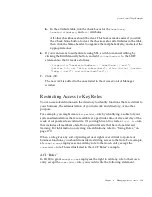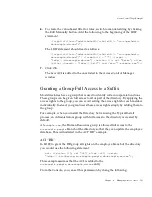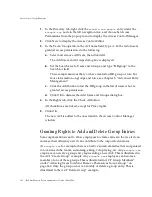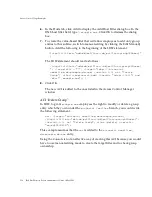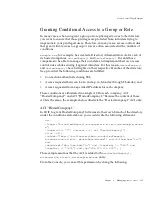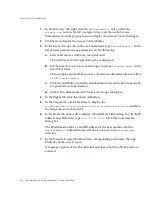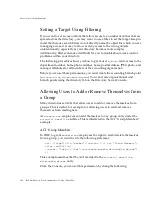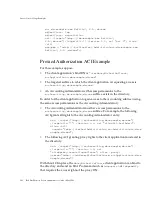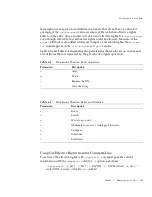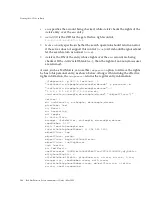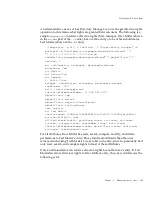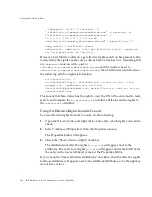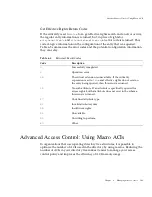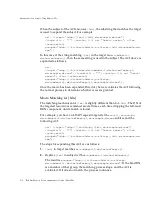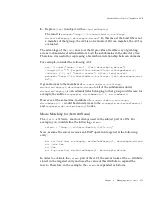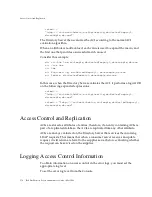
Access Control Usage Examples
Chapter 6
Managing Access Control
261
1.
In the Directory tab, right click the
example-people
entry under the
example.com
node in the left navigation tree, and choose Set Access
Permissions from the pop-up menu to display the Access Control Manager.
2.
Click New to display the Access Control Editor.
3.
In the Users/Groups tab, in the ACI name field, type
Group Members
. In the
list of users granted access permission, do the following:
a.
Select and remove All Users, then click Add.
The Add Users and Groups dialog box is displayed.
b.
Set the Search area in the Add Users and Groups dialog box to to Special
Rights, and select All Authenticated Users from the Search results list.
c.
Click the Add button to list All Authenticated Users in the list of users who
are granted access permission.
d.
Click OK to dismiss the Add Users and Groups dialog box.
4.
In the Rights tab, tick the checkbox for
selfwrite
. Make sure the other
checkboxes are clear.
5.
In the Targets tab, type
dc=example,dc=com
suffix in the target directory entry
field. In the attribute table, tick the checkbox for the
member
attribute.
All other checkboxes should be clear. This task is made easier if you click the
Check None button to clear the checkoxes for all attributes in the table, then
click the Name header to organize them alphabetically, and select the
appropriate ones.
6.
Click OK.
The new ACI is added to the ones listed in the Access Control Manager
window.
Defining Permissions for DNs That Contain a
Comma
DNs that contain commas require special treatement within your LDIF ACI
statements. In the target and bind rule portions of the ACI statement, commas must
be escaped by a single backslash (\). The following example illustrates this syntax:
Summary of Contents for DIRECTORY SERVER 7.1
Page 1: ...Administrator s Guide Red Hat Directory Server Version7 1 May 2005 Updated February 2009 ...
Page 20: ...20 Red Hat Directory Server Administrator s Guide May 2005 Glossary 619 Index 635 ...
Page 22: ...22 Red Hat Directory Server Administrator s Guide May 2005 ...
Page 26: ...26 Red Hat Directory Server Administrator s Guide May 2005 ...
Page 78: ...Maintaining Referential Integrity 78 Red Hat Directory Server Administrator s Guide May 2005 ...
Page 200: ...Assigning Class of Service 200 Red Hat Directory Server Administrator s Guide May 2005 ...
Page 488: ...488 Red Hat Directory Server Administrator s Guide May 2005 ...
Page 528: ...PTA Plug in Syntax Examples 528 Red Hat Directory Server Administrator s Guide May 2005 ...
Page 572: ...572 Red Hat Directory Server Administrator s Guide May 2005 ...
Page 612: ...Examples of LDAP URLs 612 Red Hat Directory Server Administrator s Guide May 2005 ...
Page 634: ...634 Red Hat Directory Server Administrator s Guide May 2005 ...



